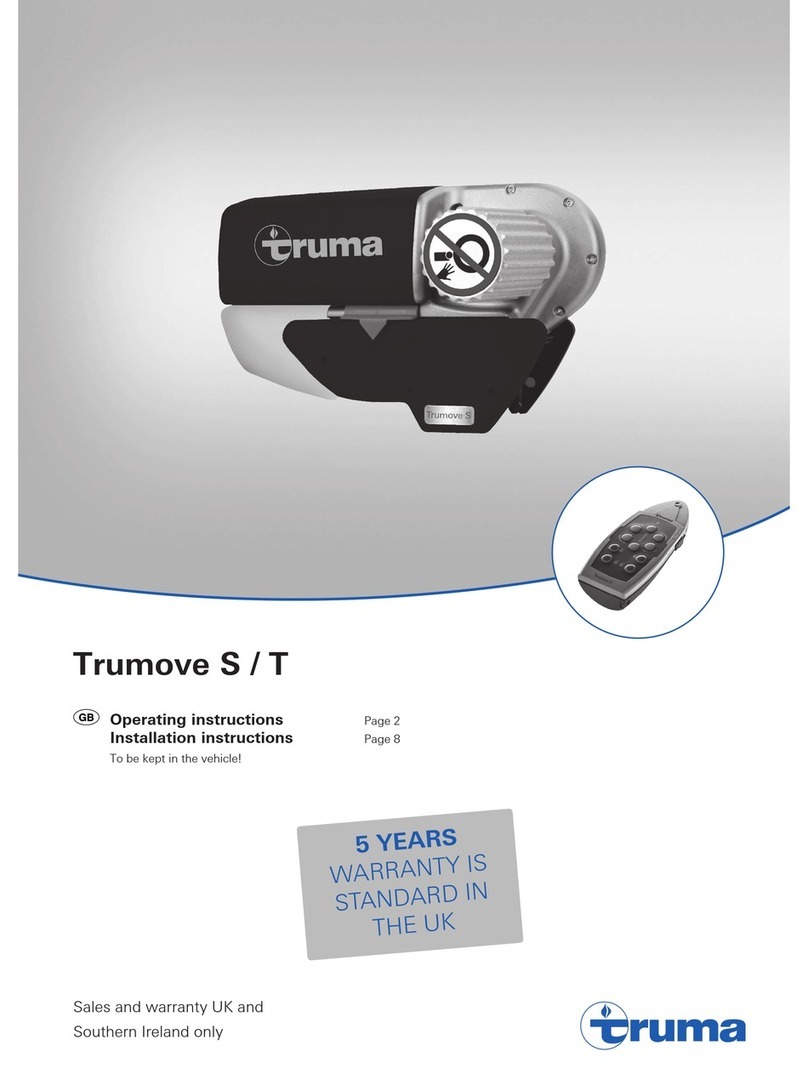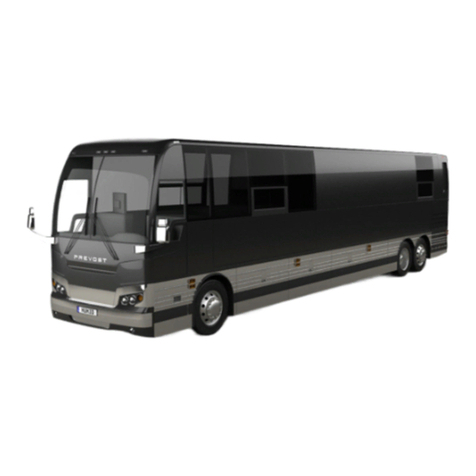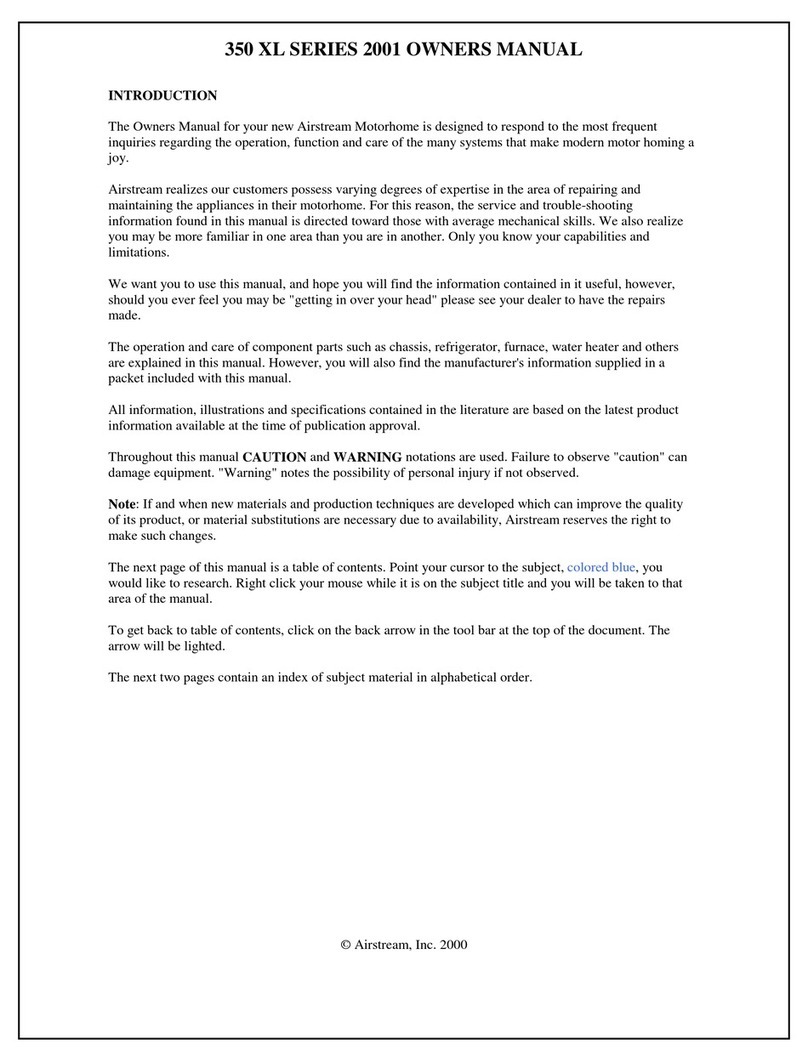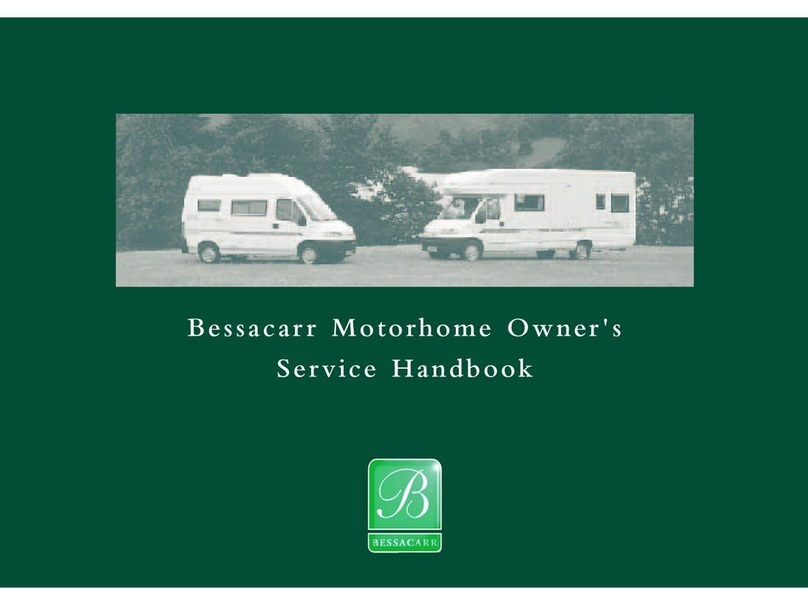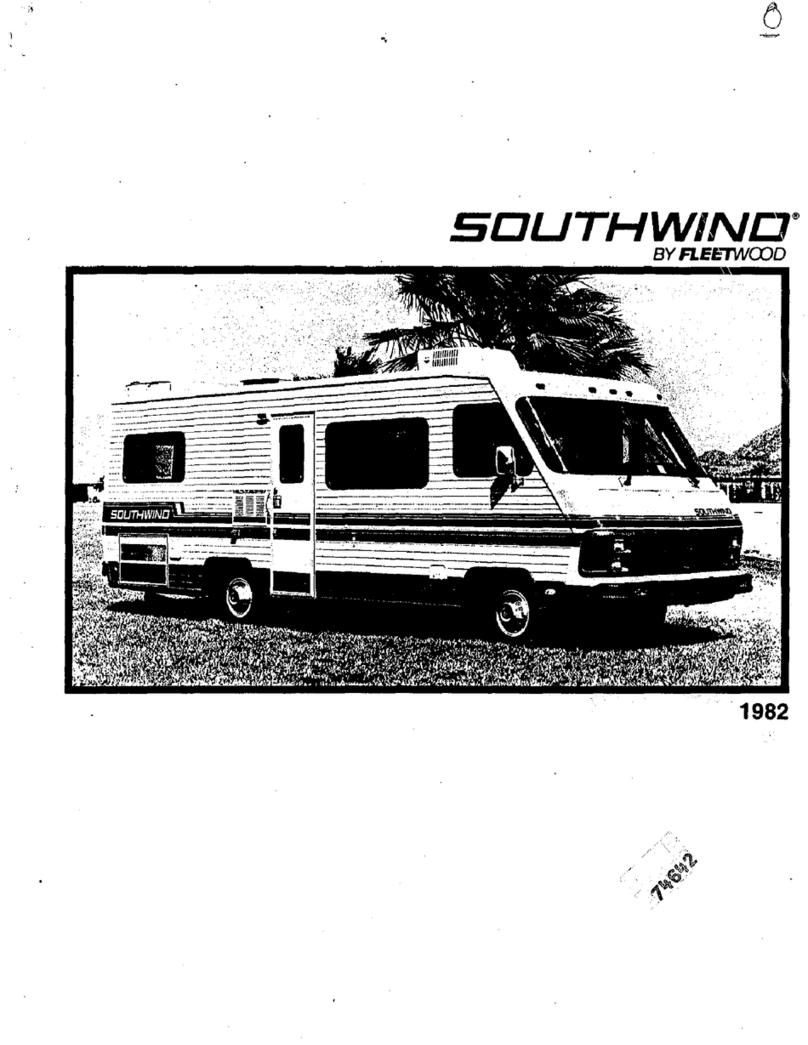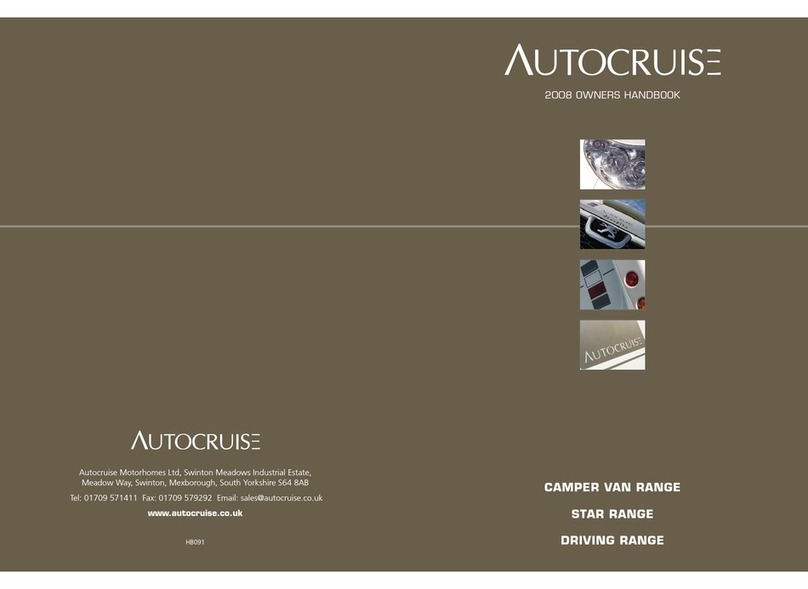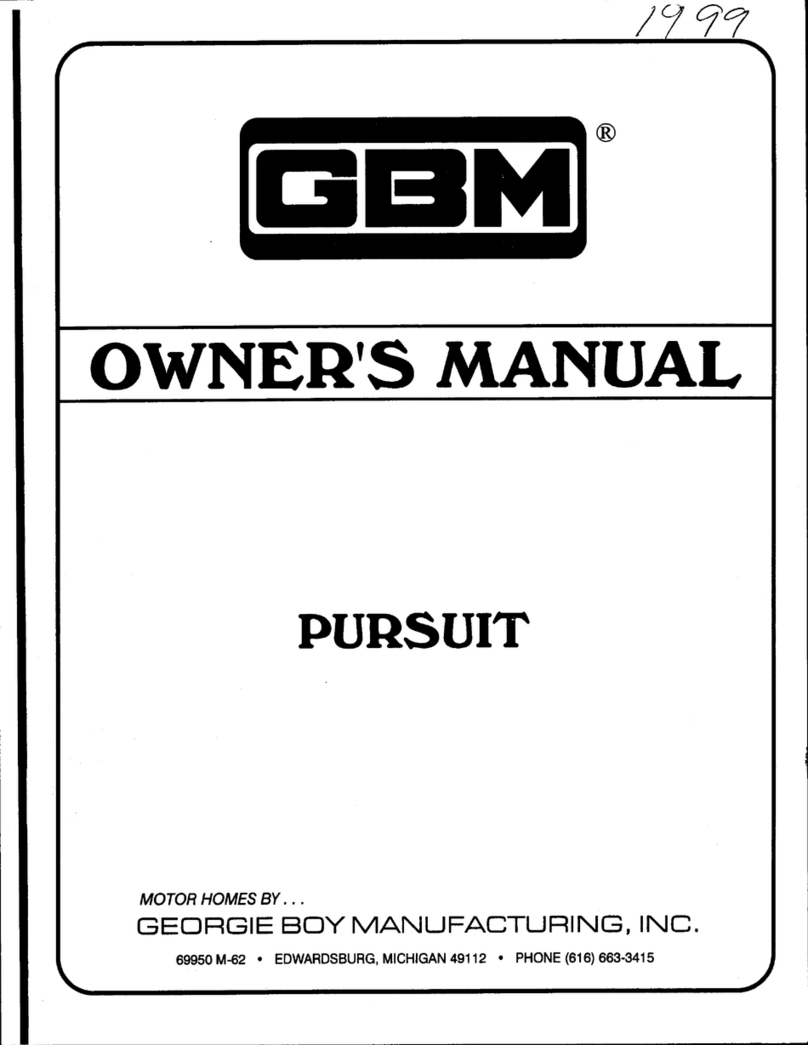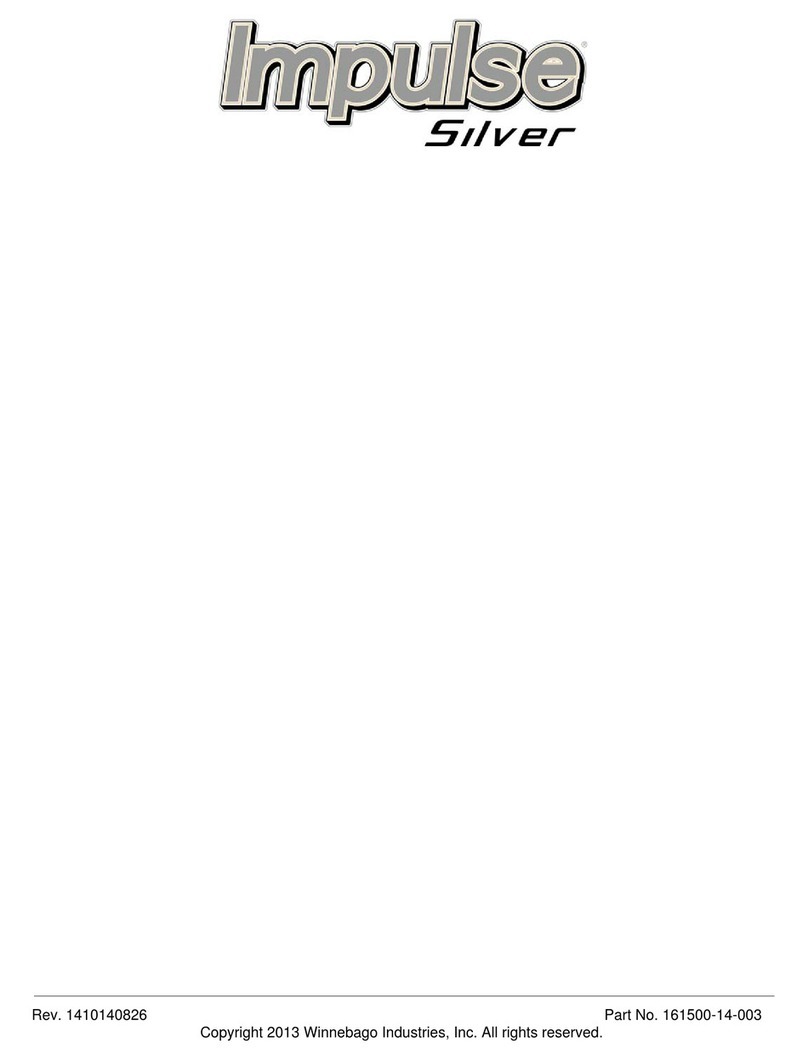Crusader Caravans Manhattan User manual

CRUSADER CARAVANS
OPERATING
INSTRUCTIONS

Thank you for choosing a Crusader caravan. Welcome to
the Crusader family. We wish you safe, enjoyable and
trouble free caravanning.
To assist you with familiarizing yourself with your caravan and its’ components we have
prepared this basic handbook for your easy reference. We trust it is of benefit to you
Basic Cleaning
Just like your car, your caravan requires regular inspection, maintenance and cleaning. Clean
the outside to remove any dirt and apply a suitable polish to protect it from the elements. Clean
the inside surfaces with an anti-bacterial cleaning solution and vacuum the floor. If you plan to
clean the upholstery and curtains, choose a warm day so you can leave the door and windows
open.
REMEMBER: DO NOT USE HIGH PRESSURE WATER SPRAY ON THE OUTSIDE OF YOUR VAN
Note: provisions of your caravan warranty coverage determine that you must have your caravan serviced and
inspected on a regular basis by a recognised Crusader Caravans service agent
Start at the front of the caravan
Check Couplings
Off road type couplings: Ensure coupling moves freely – oil or grease as necessary
Fixed Couplings: check the operation of spindle and screw nut.
NOTE: On all couplings, trigger lock on handle should be moving freely and in good
condition (oil regularly).
Check Handbrake
Check for corrosion where base plate affixes to the A frame.
Hand brake lever should move freely and lubricated regularly
Check condition of brake cable and pulleys.
Check Safety Chains
Inspect for signs of rust or cracks at fixing point on caravan draw bar
Chains must be long enough to reach towbar chain hooks (crossed over) allowing for
cornering.
Check Jockey Wheel
Handle and wheel should turn freely (if lubrication is needed, squirt oil under handle to
travel down shaft).
Wheel should spin on axle freely.
Check jockey wheel clamp and clamp bolt for easy operation.
If your caravan is being stored for extended periods and is not under cover it is
imperative that regular checks of the caravan be made to ensure that there is no
evidence of damage to the inside of the caravan particularly after heavy or prolonged
periods of rain.
The caravan door, windows and hatches should be opened on a regular basis to air the
caravan interior

Chassis frame
Should be checked regularly for rust and stress fractures, particularly outriggers and all
cross member fixing points, ‘A’ frame, springs and spring hangers and stabiliser legs.
Check for signs of movement around spring hangers, shackle plates and bushes, U-bolts
and fish plates.
Check corner stabilisers for ease of movement and ensure handle is in good condition.
Check pull out step for cracks, rust and ease of operation.
Check Wheels, Rims & Tyres
Check wheel rims for buckles, cracks or other damage after each trip.
Check tyres for signs of unusual or excessive wear from under/over inflation or wheel
alignment problems.
Bearings and oil seals should be inspected and repacked regularly.
Electric brake wiring should be checked regularly for damage or disconnect
Wheel nut tightness and tyre pressures should be checked regularly but should be
checked at least every 1500 kilometres
Check Water Tank
Check hoses for leaks, kinks, signs of damage
Check hose clamps for tightness.
Check tank straps for signs of cracking, rust or looseness.
Check water tank stone protector condition
Corner Moulds, windows & door
Inspect sealing around corner moulds, windows & doors etc. should be checked regularly
for cracks, holes or dislodgement which may allow water entry.
After heavy or prolonged rain check the inside of the van for water leaks.
Exterior Lighting
It is an important safety factor that all 12V brake indicator, tail and running lights should be
operative and lenses not faded. These should be checked before each departure
Check rubber seals around all exterior light bases to prevent intrusion of water.
Check 12V wiring and plug for any signs of breakage or insect nests in 12V plug.
Gas Fittings
Check gas connections by turning gas bottle on and spraying fittings with soapy water. If
bubbles occur it means there is a gas leak. Turn gas off at the gas bottle,
Check flexible hose for fraying or kinks.
Main Door
Lubricate door lock and hinges with light oil (CRC type) regularly
Check condition and operation of annex roller and cabin hooks.
Door lock tongue and striker plate should be regularly checked for signs of wear.
Interior of Van
Hatches and operating mechanisms should be cleaned regularly.
All flyscreens (pop tops only) should be intact and cleaned regularly
Check cupboard door hinges and stays ease of operation
Cupboard locks should be lubricated to avoid jamming which may strain and break lock.
Fridge and stove should be firmly fixed to surrounds - loose bolts could result in appliance
jarring loose in travel. (Grasp appliance and attempt to move back and forth).
Check mattresses regularly for signs of moisture retention - causes premature wear.
Any discolouration of ply lining around hatch, windows, ceiling, or wall corners indicates the
ingress of water. Rectification of this problem should be attended to without delay

Running Operation
Connect the caravan tow plug to your vehicle and ensure all the caravan’s lights, indicators
and brake lights work correctly. This procedure should be done prior to each departure
Repairs
Any suspected fault or damage to your caravan must be reported and attended to without
delay by an authorised Crusader Caravans repair agent for warranty to be valid. Failure to notify
and have corrected any known or suspected fault or damage to your caravan by an authorised
representative of Crusader Caravans could void your warranty
IMPORTANT NOTE: Any suspected problems with gas lines, gas appliances or any electrical
fault should be referred to a qualified gas fitter or qualified electrician respectively and should
not be tampered with by an unqualified person.
Caravan awning
Awnings are a valuable part of a caravan. They effectively double the amount of space
available.
It is advisable after every trip to wash the awning down and leave extended to dry. If stored for a
long period of time it should be extended every 6 months or so to check for mould, etc.
Do not use ordinary household detergents when washing the awning as it may destroy the
water resistant coating. Washing with a mild truck wash should keep most of the mould and
mildew at bay or a product such as "Tricleanium". Which is 100% alkaline salts not acid like
CLR or Sulfuric acid. Reapply a water resistant spray if necessary. For particularly stubborn
stains use CHUX Magic Eraser from the laundry aisle of your supermarket. Keep an eye on
any repairs that may need attention with your awning, as catching them early can mean the
difference between a simple repair or a costly replacement.
Finished and ready to hit the road again!

1

2

3

4

5

6

7

WARNING
DO NOT OPERATE 240 VOLT SWITCH AND GAS
SWITCH TOGETHER
8

9

10

11

12

13

14

15

16
This manual suits for next models
8
Table of contents
